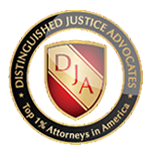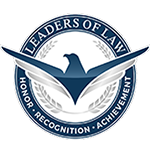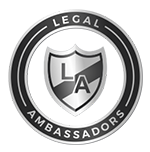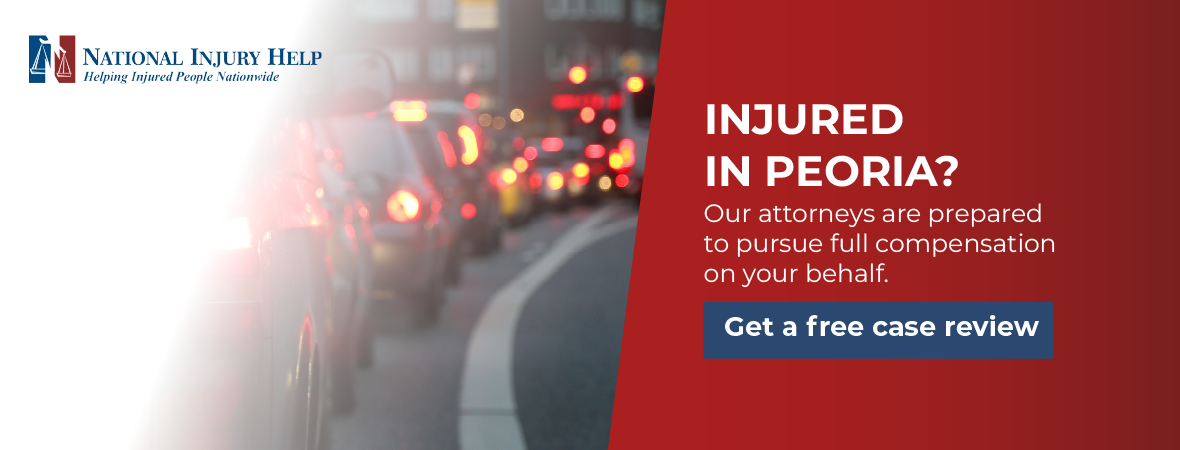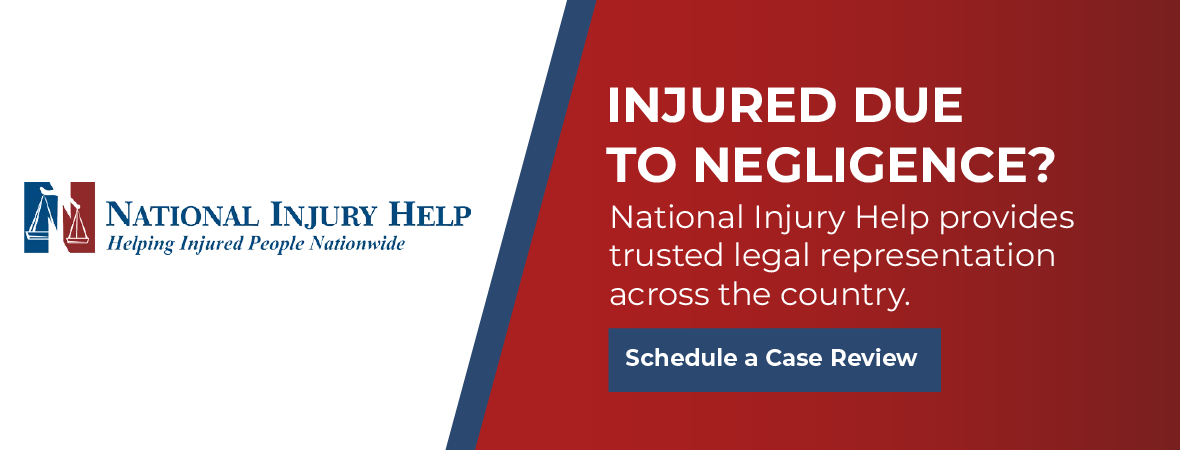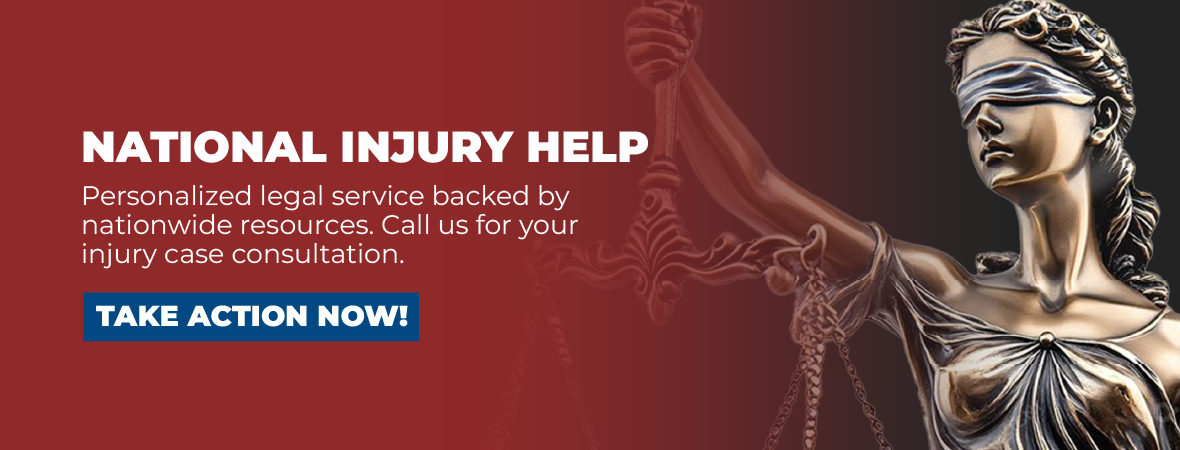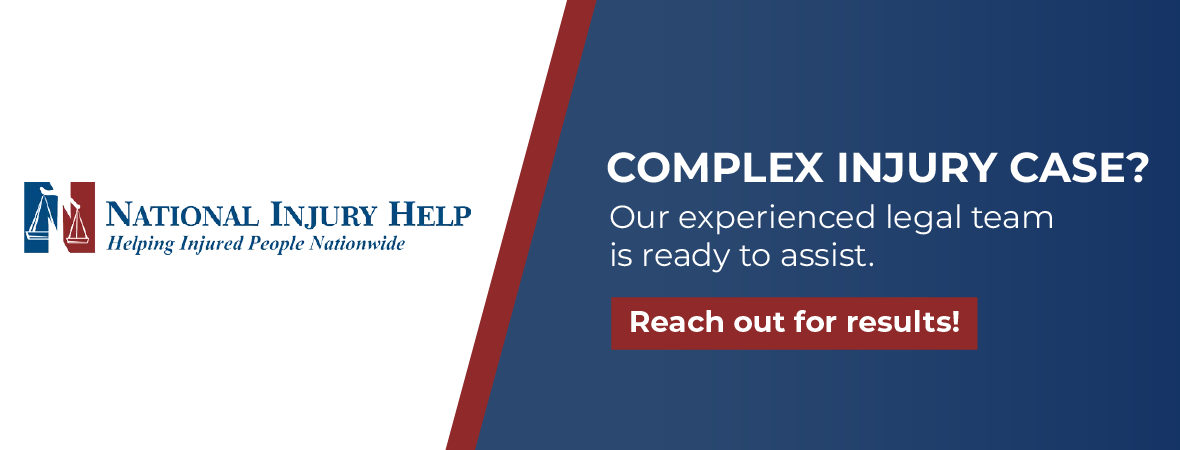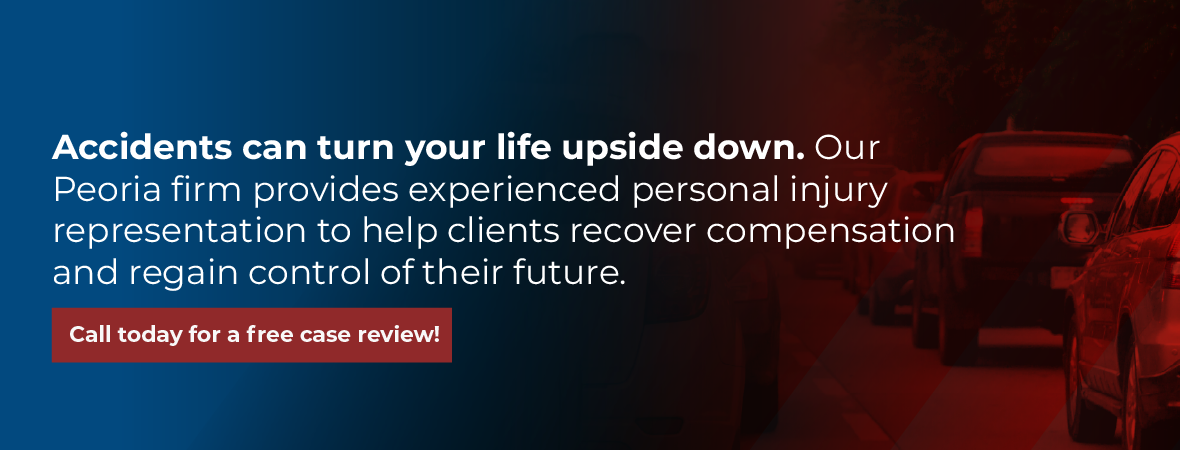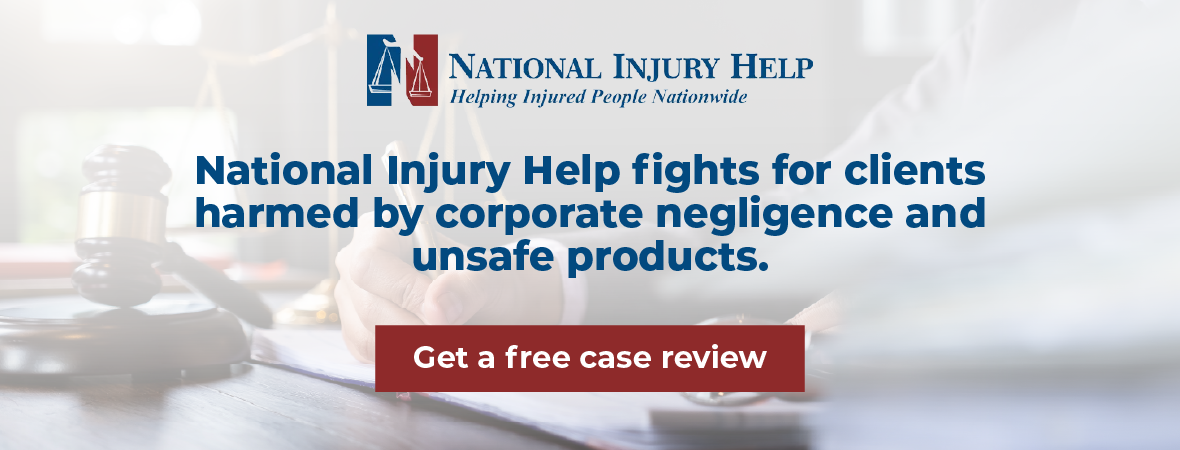A car accident in Peoria can leave you with injuries, vehicle damage, and insurance headaches. Call 1 (800) 214-1010 to contact our team at National Injury Help today.
A sudden crash on Grand Avenue can change a life in seconds. One moment, you are heading home from Fry’s with groceries in the trunk. Next, you hear tires screech, feel a violent jolt, and see shattered glass across the dashboard.
Even if you manage to step out of the car under your own power, the stress continues long after police clear the scene. Neck pain might tighten overnight. The family budget can buckle as medical bills replace regular paychecks. Arizona law lets injured victims demand full compensation from the driver who caused the wreck, but insurance companies do not hand over money without proof and persistence.
A Peoria car accident lawyer handles that fight so you can focus on healing instead of letter writing and phone tag. We are here to fight for your rights and support your full recovery.
Common Causes of Car Accidents in Peoria
Every crash has its own story, yet most begin with the same few mistakes. Understanding those mistakes helps you spot liability and gather evidence before memories fade.
Distracted Driving
Phones compete for your attention in every aspect of life, and they can be especially enticing during the long nights on Bell Road. A quick look at a text message or GPS route keeps eyes off moving traffic for precious seconds. Even a single bite of a breakfast sandwich can blur focus. Speed and distance judgment disappear when a driver glances down, and rear-end collisions follow.
Speeding and Aggressive Driving
Loop 101 offers wide lanes and gentle curves, a combination that tempts drivers to push well past the limit. Higher speeds reduce reaction time, making it harder to avoid cars merging from Bell Road or Thunderbird Road. Aggressive lane hops and tight tailgating change small errors into chain-reaction crashes that involve several vehicles and multiple insurance policies.
Impaired Driving
Nightlife along 83rd Avenue and Happy Valley Road brings fun but also danger. Alcohol slows reflexes and blurs vision. Marijuana and some prescription pills can add confusion or fatigue. Impaired drivers drift across center lines or miss red lights, causing head-on or T-bone impacts that leave passengers with severe injuries.
Failure to Yield or Stop
Peoria features many wide intersections where two busy roads cross at right angles. When a driver rolls through a stop sign at Olive Avenue or tries to beat a yellow light on Grand Avenue, cross traffic has no chance to slow. Side impacts often hit at door height, right where a seated driver or passenger is most vulnerable.
Weather and Road Conditions
Rainstorms in the Valley can turn oily pavement slick in mere minutes. Dust storms drop visibility to near zero on Grand Avenue during monsoon season. Potholes from heavy summer heat weaken suspension parts and cause blowouts. When drivers fail to change speed for poor conditions, liability still rests on their shoulders even if Mother Nature supplied the hazard.
What to Do After a Car Crash in Peoria
Quick decisions shape the strength of every injury claim. A clear head and a few simple steps turn confusion into a solid legal foundation.
Call 911 and Seek Medical Attention
Your first task is to make sure you are safe. Dial emergency services. Ask dispatchers for police and paramedics. Even if you feel only shaken, be sure to let a doctor check you at the emergency room or an urgent care clinic. Soft tissue damage and concussions don’t surface until a few hours have passed. Early scans and notes connect later symptoms directly to the crash rather than another cause that insurers might raise.
Exchange Information With the Other Driver
Gather names, the driver’s license numbers, insurance companies, policy numbers, and license plates. Confirm phone numbers while still at the curb. An attorney can track people down later, but nothing beats an accurate contact sheet made on the spot.
Document the Scene
Use your phone camera before tow trucks move vehicles. Take wide shots from several angles to show positions on the street. Then, capture close-up photos of skid marks, traffic signs, shattered glass, and visible injuries. Video works too. If witnesses stop, politely record their statements or at least ask for phone numbers.
File a Police Report
Arizona law requires a written report when anyone is hurt or if property damage exceeds one thousand dollars. Officers list obvious faults, weather, and road signs while facts remain fresh. That unbiased record carries great weight when insurance adjusters debate blame months later.
Notify Your Insurance Company
Most policies require prompt notice. Call a claims line or use a mobile app, but keep the description factual and simple. Avoid any phrase that might suggest guilt, such as “I did not see the light” or “I was probably speeding.” Answer basic questions, then let your lawyer handle deep discussions.
Peoria Car Accident Lawyer Explains Arizona Car Accident Laws That Impact Your Claim
When you are injured in a car accident, the legal rules that apply in Arizona shape everything, from how blame is determined to how fast you must act and how much you can recover. Below are key legal principles that influence your case and explain how each affects your rights and options after a crash.
What Is The At-Fault System
Arizona uses an at-fault or tort system for car accidents. This means that the person who caused the crash is primarily responsible for paying the other party’s losses. Fault may be found when a driver:
- Was texting or using a phone
- Ran a red light or stop sign
- Drank and drove
- Drove too fast for conditions
- Failed to yield the right of way
Once fault is assigned, either by the police report, fault admissions, or later by a jury, that driver’s insurance is responsible for covering:
- Medical expenses related to injury
- Future medical or therapy costs
- Lost income if you miss work
- Vehicle repair or replacement value
- Pain and suffering, loss of normal life
In most cases, you file a third‑party claim with the at‑fault driver’s insurance company. If the driver’s coverage is not enough or is denied, you may file a personal injury lawsuit and seek more through the courts.
Comparative Negligence Rule
Arizona follows a strict pure comparative negligence system under A.R.S. § 12‑2505. This means:
- You may still recover compensation even if you share some of the blame
- Each party is assigned a percentage of fault by a jury or through a settlement
- Your final award is reduced by your percentage of responsibility
For example, imagine you were rear‑ended at a traffic light but were 10% at fault for speeding. If your total damages are $100,000, you would receive $90,000 after the adjustment due to your percentage of fault. Even if you were 70% at fault, you could still recover 30% of the total damages.
Comparative negligence allows those partially at fault to be compensated fairly, but also encourages safe behavior and cleaner driving.
Statute of Limitations
Time is critical. Arizona gives most crash victims two years from the date of the collision to file a personal injury lawsuit. Once the deadline passes, known as the statute of limitations, your court case will almost certainly be dismissed, even if you have strong evidence of fault and damages.
There are exceptions. For example, if the accident involved a government vehicle (such as a city bus) or occurred on public property, you usually must file a formal notice of claim within 180 days. This shorter window also applies to crashes with police cars, waste management trucks, or county vehicles.
You may still file a lawsuit after 180 days, but only if the government accepts your claim or fails to respond within the legal deadline. Waiting longer without a lawyer’s guidance puts your case at serious risk.
Insurance Requirements in Arizona
Arizona mandates that every driver carry a minimum level of insurance:
- $25,000 for bodily injury per individual
- $50,000 total bodily injury per accident
- $15,000 for property damage per accident
These are the minimums required to register a vehicle and drive legally in the state. However, serious accidents often cause damages far above those numbers. A head‑on collision, rollover, or crash with a larger vehicle may result in medical bills, lost wages, and vehicle repairs that exceed $100,000.
If the at‑fault driver only has the state minimum coverage, it may not be enough to fully compensate you. A key role for your attorney is to identify additional insurance policies, such as:
- Underinsured motorist (UIM) coverage in your own policy
- A spouse’s or parent’s policy that lists the driver as an insured
- Employer liability if the driver was on the job
- Multiple policies in owner‑operator situations (lease drivers, etc.)
If all insurance options are still insufficient, your lawyer may pursue the at‑fault driver’s personal assets, such as savings or property, through a lawsuit.
Emergency Treatment and Prompt Medical Care
Though not a law on its own, your actions after a crash can affect your case. Insurers often argue that delays in seeking medical care mean your injuries are minor or unrelated to the crash.
Seeking treatment right away, especially for symptoms like dizziness, neck pain, or headaches, ensures your medical records clearly connect the treatment to the accident date. This, in turn, strengthens your injury claim and counters the argument that your condition was caused by something else.
Reporting Requirements for Accidents
Arizona law also requires reporting certain types of accidents:
- Any crash with injury or death must be reported to law enforcement from the scene
- Collisions involving property damage over $1,000 must also be reported
- Records of these reports help support your case and reduce disputes over what happened
Failing to report a serious accident does not bar your claim in most cases, but it can hurt your credibility. A missing police report may also limit available evidence.
Use of Seat Belts and Safety Gear
Arizona law requires seat belt use for front-seat passengers and drivers. Motorcyclists must wear approved helmets if under 18, and it is strongly encouraged for all riders. Not wearing a seat belt or helmet does not automatically prevent you from recovering damages, due to comparative negligence.
However, insurers may argue that your injuries were worsened by not wearing safety gear. Without this evidence, your total award could be reduced, even if you were not primarily at fault.
Uninsured/Underinsured Motorist Coverage (UIM/UM)
Because many drivers only carry the minimum insurance, you should consider UM/UIM coverage. This protects you when the at-fault driver has no insurance or low limits that do not fully cover your losses.
- Uninsured motorist (UM) applies if the at-fault driver has no insurance at all (hit-and-run or unregistered vehicle)
- Underinsured motorist (UIM) applies when coverage is too low to cover your full expenses.
In Arizona, UM/UIM coverage must match the limits of your liability policy unless you rejected it in writing. Claims under UM/UIM are made to your own insurer, so you avoid delays or disputes with an at-fault driver’s carrier.
What Compensation Can You Recover After a Car Accident
A crash drains money long after a bumper is replaced. State law lets you demand every dollar tied to injury, loss, or hardship.
Medical Expenses
Your health is the primary focus after a crash. Injuries range from minor bruises to long-term disabilities, and the medical costs can be overwhelming. Compensation covers just about everything: ambulance rides, emergency room visits, diagnostic codes, hospital stays, outpatient surgeries, rehab, prescription drugs, right up to projected lifelong treatment.
Examples of recoverable medical costs include:
- Ambulance and emergency treatment: The cost of the call-out, paramedics, emergency stabilization, and tests.
- Hospitalization and surgery: Daily room bills, equipment, surgeon fees, anesthesia.
- Rehabilitation: Physical therapy, occupational therapy, chiropractic, or acupuncture sessions.
- Diagnostic tests: MRIs, CT scans, X-rays, lab work.
- Medications: Pain relievers, anti-inflammatories, prescription muscle relaxers.
- Long-term care: In-home nursing includes durable medical equipment like wheelchairs or home ramps.
A strong case brings together medical records, treatment plans, and cost breakdowns so insurers can’t write off treatments as “unnecessary.” Attorneys may also retain life-care planners to map future care and put a dollar amount on ongoing needs, vital for a serious spinal injury or chronic pain condition.
Lost Wages and Income
Being hurt often means missing work. Even a short absence can mean missed pay, and in more serious cases, extended or permanent income loss is possible.
Recoverable income includes:
- Lost wages: Hourly and daily pay based on time missed.
- Overtime and shift differentials: If your job carries evening pay rates.
- Bonuses, commissions, or tips: Any income you would have earned had you been able to work.
- Future earning capacity: If you cannot return to your former job or industry.
An economist may forecast your financial future. They use age, education, experience, skills, and promotions path to determine your lost earnings and retirement shortfall. These projections often double or triple the final settlement, especially for breadwinners in their prime.
Pain and Suffering
Not all losses show up on a bill, but Arizona law allows compensation for them, too. Pain and suffering cover physical agony as well as emotional distress.
Elements of pain and suffering claims include:
- Physical pain and limitations: Daily soreness, walking restriction, numbness.
- Psychological impact: Anxiety, depression, PTSD, fear of driving
- Life disruption: Interrupted hobbies, missed family events, inability to ride a bicycle again.
To support these claims, attorneys use:
- Medical records diagnosing depression or anxiety
- Therapy bills and treatment summaries
- Daily journals detailing symptoms, mood, and limitations
- Witness statements about your post-crash struggles
A documented path of treatment and experience humanizes the numbers and helps juries or adjusters understand the full impact.
Property Damage
Even though it is often straightforward, this piece focuses on more than just fixing your car. Any lost item during the accident qualifies.
Recoverable costs include:
- Vehicle repairs or replacement value if totaled
- Replacement items, phones, tablets, glasses, and laptops damaged during impact
- Child car seats that must be discarded after serious crashes
- Custom jobs or aftermarket parts installed at personal cost
Receipts, repair estimates, and photos help create a clear record of these losses. This prevents insurers from undervaluing or denying the damage claim.
Projected Future Expenses
When injuries reduce your quality of life, you might need added support:
- Home modifications: Wheelchair ramps, stairlifts, widened doorways, accessible bathrooms.
- Vehicle adaptations: Hand controls, wheelchair lifts, mobility training.
- Personal care: Hiring nurses, aides for daily tasks, therapy coaches, or life coaches.
- Continued medical care: Ongoing follow-up, testing, or cognitive therapy.
Rehab professionals help project these ongoing costs and incorporate them into your claim. Accurate forecasting helps avoid future shortfalls and sends a clear signal that your injuries are more than a one-time event.
Loss of Earning Capacity
If your injury leaves you unable to return to your previous job or pay rate, you may seek compensation for your reduced earning capacity.
- A one-time injury, such as wrist damage, may prevent a hairstylist from doing their full range of services.
- A back injury can end a longshoreman’s career in a physically demanding warehouse.
To prove this loss, your lawyer uses:
- Medical opinions on your physical limitations
- Vocational experts who assess transferable skills
- Economic evaluators who calculate lifetime earnings differences
These findings often reveal gaps in insurance offers and compel higher settlements.
Loss of Enjoyment of Life
This emotional impact claim recognizes the non-prescriptive effects of your injury. If you can no longer dance with your spouse, hike with your kids, or paint, that’s a real loss.
Evidence includes:
- Personal journals or social media posts
- Statements from family and friends who notice lifestyle changes
- Expert testimony linking injury to loss of participation
Loss of enjoyment distinguishes itself from pain and suffering, focusing less on mood and more on the absence of life that once was enjoyable and fulfilling.
Punitive Damages
When negligence climbs to recklessness, Arizona law allows punitive damages, extra compensation meant to punish the defendant and deter similar behavior.
These are rare but may apply if:
- The at-fault driver was intoxicated or drugged, particularly if their blood alcohol content was very high or if they had committed a DUI
- The defendant deliberately violated safety standards, such as triple-speed street racing or testing automatic systems during civilian drives.
- Vehicle owners consciously ignored ongoing defects after warnings.
Punitive damages require proof of extreme misconduct. Courts cap punitive awards at two times the actual damages or $300,000, unless there is evidence of evil intention. In those cases, higher awards may be allowed.
Dealing With Insurance After a Car Crash
Dealing with insurance companies after a car crash is never simple. Their mission is clear: protect profit margins. Your mission is just as clear: get full and fair compensation for your injuries, losses, and emotional trauma. Understanding their strategies, knowing your rights, and enlisting help when needed can make all the difference.
First-Party vs. Third-Party Insurance Claims
Understanding whether you are filing a first-party or third-party claim is critical.
- First-party claims involve your own insurance company, from policies you already pay for, such as collision coverage, uninsured/underinsured motorist (UM/UIM), or medical payments (MedPay).
- Third-party claims target the at-fault driver’s insurer by filing under their liability coverage.
Common Insurance Company Tactics
Insurance companies use a set of playbooks to minimize payouts. While well-practiced, each strategy has its weaknesses.
1. Minimizing Diagnosis Codes
Injuries may carry multiple codes, for example, concussion, neck strain, and chronic pain. Adjusters sometimes accept only the first code or devalue secondary injuries that develop later. You deserve compensation for your full condition.
2. Questioning Treatment Length
If your treatment continues beyond six months, even for rational, medically necessary reasons, an adjuster may claim “your accident must not have been that bad.” Such comments undermine your credibility.
3. Blaming Preexisting Conditions
Insurance rep: “I see you had knee pain before the crash. It’s probably unrelated.”
Your lawyer knows that under Arizona law, aggravation of a prior injury is compensable. The treatment records, a doctor’s notes, and your history can show how the crash worsened or accelerated a condition.
4. Delay to Increase Financial Pressure
Waiting for weeks or months, during which medical debt and late fees grow, puts pressure on you to take a lowball settlement. That release becomes harder to reverse later.
5. Encourage Recorded Statements
Adjusters ask questions meant to sound simple and friendly, “Did you feel okay at the scene?”, then use your response to push a narrative that you must not be that injured. They may cut and splice your answers to present them out of context.
Why Recorded Statements Are Dangerous
Insurance adjusters have one goal: get you to say something that reduces their payout. Even innocuous remarks can be weaponized:
- Saying “I felt okay” minutes after the accident may override your later symptoms.
- A statement that “my knee was fine before” opens the door for them to argue that your injury must not be related.
- “I don’t remember” can be spun to suggest you are lying or shaky, which may harm your credibility.
The safest approach is to refuse private recorded statements. Refer the adjuster to your lawyer for a thorough interview at an appointed time, with your representation present. This prevents misquotes, misinterpretations, and selective editing.
Determining When You Need an Experienced Peoria Car Accident Lawyer
Not every fender-bender needs a lawyer, but there are clear markers.
1. Injuries Are Serious or Ongoing
If medical costs start hitting $5,000, or your treatment extends past 6–8 weeks, you’re in a different league. Long treatments signal lasting impact. At this point, a lawyer can help secure funds faster and handle negotiations.
2. Medical Treatment Will Continue
If you’ve been advised you’ll need surgery or months of therapy, your settlement will need to include those future costs. This often involves life-care planners, cost projections, and expert testimony to justify the value. An uninsured adjuster may refuse to pay without irrefutable proof.
3. Fault Is Disputed
With no clear ticket or admission of guilt, or in a scenario such as a temporary green light versus yellow conflict, determining fault becomes more complex.
Lawyers hire accident recon experts, gather witness testimony, and produce diagrams. This evidence increases your odds of proving liability and winning full compensation.
4. Insurance Limits Are Low
With minimum liability insurance ($25,000 per injury; $50,000 per crash), serious accidents often exceed those limits.
A lawyer knows how to find additional coverage, like a spouse’s underinsured policy, workplace coverage, umbrella policies, or even the personal assets of the at-fault party.
5. Insurance Company Is Stonewalling
If your phone calls go unanswered, forms remain unreturned, or you’re given stalled dates for payment, it may be time to act. Adjusters may save their real offers until they think you give up. Your lawyer can issue demand letters and warnings of litigation that encourage quicker resolutions.
How a Peoria Car Accident Lawyer Can Help You
Legal representation shifts the burden of proof, paperwork, and negotiation off your shoulders.
Investigate the Crash and Gather Evidence
Lawyers obtain the full police report, 911 call logs, and scene photographs before they vanish into agency archives. They interview witnesses, request traffic-cam footage, and hire accident reconstruction specialists when necessary. Each fact builds a solid timeline.
Prove Fault and Damages
Medical records show injury, yet they need context. Attorneys work with doctors to craft clear narratives linking each symptom to the collision. Wage records, tax returns, and vocational assessments prove how health issues reduce earning power. The result is a package that insurance adjusters cannot dismiss with a simple “not linked” claim.
Handle Insurance Negotiations
Legal letters reference statutes, case law, and policy language. They outline every damage category with supporting documents. When adjusters counter with low figures, lawyers cite trial verdicts and the threat of litigation, pushing offers upward.
File a Lawsuit if Necessary
If dialogue stalls, legal teams draft complaints, serve defendants, and navigate discovery in the Maricopa County Superior Court. They take depositions, argue motions, and prepare exhibits before a jury hears opening statements. Many cases settle just before trial begins, pressured by the reality of courtroom exposure.
Work on a Contingency Basis
Most car accident attorneys charge no hourly fee. They advance costs such as filing expenses and expert evaluations. Payment comes from a percentage of the final settlement or verdict. If the lawyer does not win money, you owe nothing for legal services.
Contact a Peoria Car Accident Lawyer
After a car accident, it is easy to feel overwhelmed. Medical bills can pile up, work becomes uncertain, and dealing with insurance adjusters can add more stress to an already difficult situation. At National Injury Help, we step in to protect your rights and take the legal weight off your shoulders.
Our experienced Peoria car accident attorneys know how to build strong cases from the start. We investigate the crash, collect important evidence, and speak with witnesses. We also gather your medical records and future care plans to show the full extent of your injuries. You do not have to chase down paperwork or argue with the insurance company. We take care of that for you.
If your accident happened on Grand Avenue, Loop 101, or one of Peoria’s busy intersections, we are here and ready to help. We understand the local roads, the local courts, and the unique challenges that accident victims face in this part of Arizona.
The first step is simple. Call us for a free consultation with a Peoria car accident lawyer. You will speak with someone who listens carefully, answers your questions, and explains what comes next. There is no cost to get started, and we only get paid if we win compensation for you.
Time matters in car accident cases. Evidence can fade, and legal deadlines can approach quickly. Let us start helping you today so you can focus on getting better. Call 1 (800) 214-1010 to speak with an auto accident attorney in Peoria who will fight for the full amount you deserve.
Frequently Asked Questions (FAQ) for Car Accident Victims in Peoria, AZ
What should I do immediately after a car accident in Peoria?
Your first priority is safety. Call 911 for police and medical help, even if you feel okay, as some injuries like whiplash or concussions may not be immediately apparent. Exchange insurance and contact information with the other driver. Use your phone to take pictures of the scene, vehicle damage, traffic signs, and any visible injuries. File a police report, as Arizona law requires this for injuries or property damage over $1,000. Notify your own insurance company promptly but keep the conversation factual.
Who is at fault for a car accident in Arizona?
Arizona is an “at-fault” state. This means the driver whose negligence caused the accident is legally responsible for the resulting damages. Fault is determined by evidence such as police reports, witness statements, traffic camera footage, and accident reconstruction. Even if you are partially at fault, Arizona’s “pure comparative negligence” rule means you can still recover compensation, but your award will be reduced by your percentage of fault.
How long do I have to file a car accident lawsuit in Arizona?
The statute of limitations for most car accident injury claims in Arizona is two years from the date of the crash. If you miss this deadline, you will likely be barred from filing a lawsuit. There are exceptions, such as accidents involving government vehicles, which may require you to file a notice of claim within 180 days. It is crucial to speak with a lawyer as soon as possible to protect your rights.
What compensation can I recover after a Peoria car accident?
You may be able to recover compensation for medical expenses (past and future), lost wages, loss of future earning capacity, property damage, and non-economic damages like pain and suffering, emotional distress, and loss of enjoyment of life. In rare cases involving extreme recklessness (like a DUI), punitive damages may also be available.
The insurance company wants a recorded statement. Should I give one?
It is generally not advisable to give a recorded statement to the other driver’s insurance company without first consulting an attorney. Adjusters are trained to ask questions in a way that may lead you to say something they can use to minimize or deny your claim. You are not legally required to provide this statement. Your lawyer can handle all communication with the insurance company on your behalf.
What if the driver who hit me doesn’t have enough insurance?
Arizona’s minimum insurance requirements are often insufficient to cover serious injuries. If the at-fault driver is underinsured, your own Underinsured Motorist (UIM) coverage can be crucial. This coverage, which you purchase as part of your own policy, can help cover the gap between the at-fault driver’s limits and your total damages. A lawyer can review all available insurance policies to identify potential sources of recovery.
When should I hire a Peoria car accident lawyer?
You should strongly consider hiring a lawyer if: your injuries are serious or require ongoing medical treatment; the fault for the accident is disputed; the insurance company is offering a low settlement or delaying your claim; or the accident involved multiple vehicles or a commercial truck. Most car accident lawyers work on a contingency fee basis, meaning you pay no fees unless they win money for you.
How can a Peoria car accident lawyer help me?
A lawyer can investigate the crash, gather evidence (like police reports, witness statements, and traffic cam footage), handle all negotiations with insurance companies, calculate the full value of your claim including future expenses, and file a lawsuit if a fair settlement cannot be reached. This allows you to focus on your recovery while an expert handles the legal complexities.

